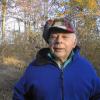Transient rather than permanent telomerase is not the issue. I believe my modified statement zero's in on transient aspect, and stops folks from considering the statement in such a broad way (which turns off alot of folks that have been dealing with permanently turned on telomerase in immortal cells).
The lab you mentioned was done by the company related to Geron and shows the results of 4 types of cancer xenografted on mice. Basically it shows no statistical increase, over regular tumour growth. From the publication below...
If the patient already has cancer, it is likely that the tumor is already telomerase positive, and thus the activator is not likely to impact tumor progression.
This is what the lab results basically show in my humble opinion.
=====================================================
In Telomerase Therapeutics for Degenerative Diseases - Calvin B. Harley*
Geron Corporation, Menlo Park, CA, 94025, USA
Calvin' abstract:
Abstract: Telomerase is active in early embryonic and fetal development but is down-regulated in all
human somatic tissues before birth. Since telomerase is virtually absent or only transiently active in
normal somatic cells throughout postnatal life, telomere length gradually decreases as a function of
age in most human tissues. Although telomerase repression likely evolved as a tumor suppressor
mechanism, a growing body of evidence from epidemiology and genetic studies point to a role of
telomerase repression and short telomeres in a broad spectrum of diseases: (a) Humans with shorter
than average telomere length are at increased risk of dying from heart disease, stroke, or infection;
(b) Patients with Dyskeratosis congenita are born with shortened telomeres due to mutations in
telomerase components, suffer from a variety of proliferative tissue disorders, and typically die early
of bone marrow failure; and © Individuals with long-term chronic stress or infections have accelerated
telomere shortening compared to age-matched counterparts. Telomerase activation may prove useful
in the treatment of diseases associated with telomere loss. While human cells dividing in culture lose
telomeric DNA and undergo changes that mirror certain age- or disease-associated changes in vivo,
telomerase transduced cells have extended replicative capacities, increased resistance to stress,
improved functional activities in vitro and in vivo, and no loss of differentiation capacity or growth
control. In addition, telomerase transduction in vivo can prevent telomere dysfunction and cirrhotic
changes in liver of telomerase knockout mice. Thus, pharmacological activation of telomerase has
significant potential for the treatment of a broad spectrum of chronic or degenerative diseases.
Cells that Respond to Telomerase Gene Transduction with Improved Replicative Capacity, Differentiated
Function, and/or Resistance to Stress
· Bone: Osteoblasts [60-62]
· Brain and the nervous system: Neurons and neural progenitors [49, 63, 64]
· Breast: Mammary epithelial cells [65, 66]
· Connective tissue: Chondrocytes [67]
· Endocrine system: Adrenocortical cells [68]
· Esophagus: Keratinocytes, squamous cells [69, 70]
· Eye: Retinal pigmented epithelial (RPE) cells [71], corneal keratocytes [72]
· Gum tissue: Gingival fibroblasts [73]
· Heart: Cardiomyocytes [45]
· Immune and hematopoietic system (normal): Cytotoxic T cells [74, 75, 15], Hematopoietic stem cells [76]
· Immune system (impaired, e.g. HIV/AIDS): Cytotoxic T cells [16, 77]
· Liver: Hepatocytes [78], stellate cells [79, 80], cholangiocytes [81],
· Muscle: Skeletal myocytes [82]
· Ovary: Surface epithelial cells [83]
· Pancreas: Ductal stem or precursor cells [84]
· Uterus: Endometrial glandular cells [85], stromal cells [86] and myometrial cells [87]
· Skin: Keratinocytes [88], fibroblasts (reviewed in [14], microvascular endothelial cells [89, 90], lymphatic endothelial cells [91, 92],
melanocytes [93]
· Vasculature: Brain [94], retinal [95] and microvascular endothelial cells, smooth muscle cells [96]
· Other: Mesenchymal [61, 97], adipose [98] and bone marrow stromal [99] stem cells; bone marrow endothelial cells [100]
In vivo Models in which Telomerase Activated (hTERT Transduced) Cells have Improved Function over
Control Cells
· Wound healing (human skin reconstitution in mice): Human fibroblasts [43] and keratinocytes (Harley, C.B. unpublished data)
· Neovascularization (normal skin or ischemic hind limb salvage in mice): Human endothelial or endothelial progenitor cells [101, 102]
· Bone formation (human cells or bone fragments injected into mice): Human osteoblasts or mesenchymal stem cells [61, 103]
· Dentin formation (rat cells into rat): Odontoblasts [104]
· Cancer immunotherapy (human melanoma in mice): Human cytotoxic T cells specific for the implanted tumor cells [105]
Potential Uses of a Small Molecule Telomerase Activator:
· AIDS: Improved cytotoxic T cell elimination of HIV-infected CD4 cells
· Cardiovascular and heart diseases: Reduced ischemic damage, improved neo-vascularization
· Chronic ulcers: Improved wound healing
· Joint diseases: Improved cartilage production
· Infections in the elderly: Improved overall immune response
· Liver disease: Improved hepatocyte growth and resistance to stress
· Macular degeneration: Improved RPE cell function; reduced angiogenesis
· Osteoporosis: Improved osteoblast function and bone generation
· Stroke and neurodegenerative diseases: Reduced ischemic damage and increased resistance to neurotoxins (e.g. amyloid)
Last part of publication:
The implications of telomerase activation in the
context of cancer initiation or progression has been
discussed in depth previously [14]. A simplified
approach to this question is illustrated in Fig. (2).
For non-cancer patients suffering from degenerative
disease or chronic conditions caused in part by
telomere-dependent cell senescence, pharmacologic
activation of telomerase should have
relatively rapid benefit. Premalignant cells present
in the patient should also have their telomeres
extended and an extended lifespan could permit
them to acquire additional mutations. However,
most evidence suggests that critically short
telomeres contribute to tumor initiation, and with
immune and other normal cells benefiting from
telomerase activation, it is possible that the net
effect of telomerase activation in such patients
could be tumor suppression. If the patient already
has cancer, it is likely that the tumor is already
telomerase positive, and thus the activator is not
likely to impact tumor progression.
CONCLUSIONS
Telomerase activation is a novel and attractive
approach for the treatment of degenerative diseases
afflicting elderly individuals and those with chronic
conditions or infections that lead to accelerated
cellular aging and loss of tissue homeostasis. The
role of telomerase in conferring increased
resistance to stress expands the potential of a
telomerase activator beyond dividing cells to nondividing
tissues such as heart and brain. Although
telomerase activation is associated with cancer
progression, telomerase is not an oncogene, and in
normal human cells and tissues, controlled
telomerase activation with a small molecule
activator should not impose an unacceptable
cancer risk.
[14] Harley, C.B. (2002) Oncogene, 21, 494-502.
Edited by Anthony_Loera, 08 June 2009 - 01:11 PM.
































 This topic is locked
This topic is locked

















